#catherine marion
Explore tagged Tumblr posts
Text
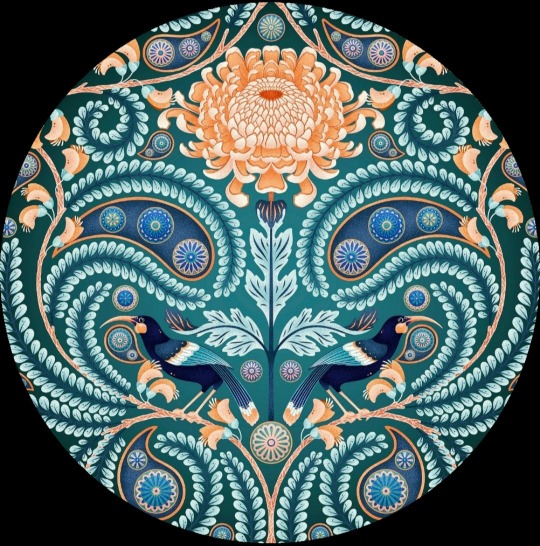
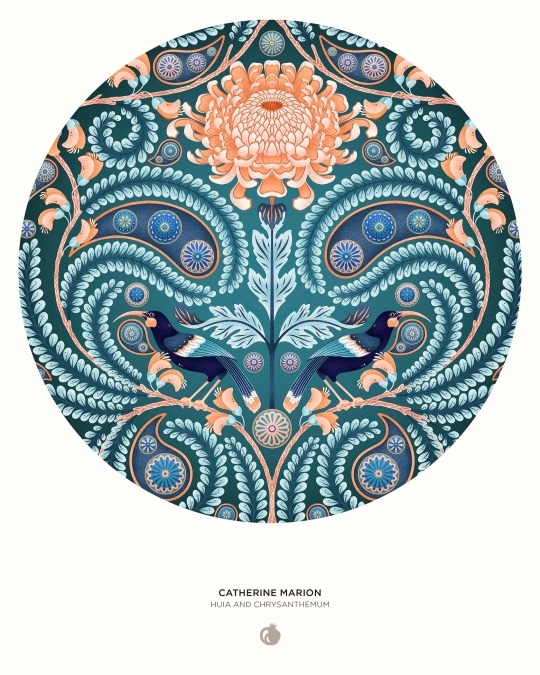

Catherine Marion, Huia and Chrysanthemum
#catherine marion#women artists#huia bird#extinct animals#extinct birds#new zealand#maori#maori culture#graphic design#graphic art
97 notes
·
View notes
Text



Propaganda Under Cut:
Catherine Bordey (Mother of Camille): Cares fiercly for her daughter and provides a motherly figure and advice for many of the young police officers in Honore.
Marion (Mother of Bloom + Daphne): Marion often acts as a voice of reason between her stubborn daughter and husband. She is more willing to be flexible in regards to royal protocol as long as her children are happy.
Mina Harker (Mother of Jonno): When Mina came back for Jonno and realised that he had been swept up in his father's beliefs about vampires and believing it to be a delusion she stayed to try and her son come to terms with reality. When the truth came out she apologised for not believing him. And when he becomes close to Vlad Dracula she becomes worried about him knowing the danger that this could bring him and trying to make him understand the risks that allying with vampires could bring.
#female tournaments#best mother figure#best mother tournament#character tournament#tumblr bracket#catherine bordey#death in paradise#marion winx club#queen marion#mina van helsing#young dracula#yd
4 notes
·
View notes
Text
Your Femme Fatale Persona Based On Moon Sign...

Just for fun, astro observations. Enjoy! This is based on the manifestation of... "they made me do it". So, while I dont agree this is the Femme Fatal "homeostasis" of each moon sign, I believe that, at one's darkest hour, these are the specific persona's each of us would take on...
Aries Moon - Lara Croft (Tomb Raider): Strong, independent, and fearless, the Aries Moon femme fatale is a daring adventurer who isn't afraid to take risks. Like Lara Croft, she's always ready for action and thrives on challenges. Additionally...
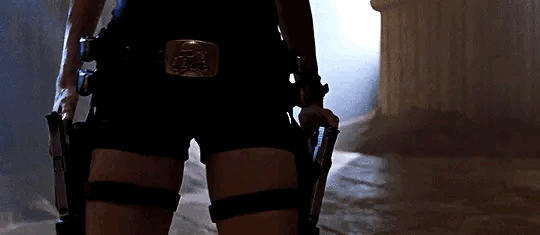
The Bride (Kill Bill): Driven, vengeful, and skilled in martial arts.
Aeon Flux (Aeon Flux): Athletic, daring, and rebellious.
Taurus Moon - Satine (Moulin Rouge!): Sensual, alluring, and grounded, the Taurus Moon femme fatale is a master of seduction. Like Satine, she knows how to use her beauty and charm to get what she wants while remaining emotionally steadfast. Additionally...
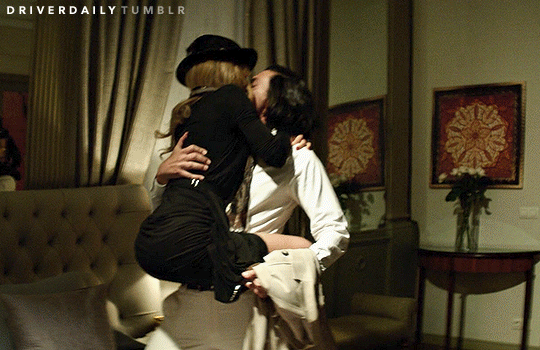
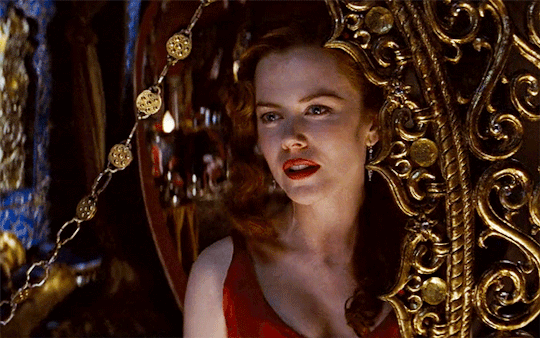
Sugar Kane Kowalczyk (Some Like It Hot): Sexy, charming, and pleasure-seeking.
Regina George (Mean Girls): Popular, manipulative, and materialistic.
Gemini Moon - Catwoman (Batman Returns): Clever, adaptable, and enigmatic, the Gemini Moon femme fatale is a master of disguise. Like Catwoman, she's quick-witted, elusive, and always keeps others guessing. Additionally...
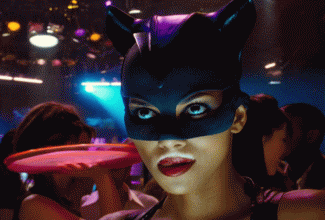
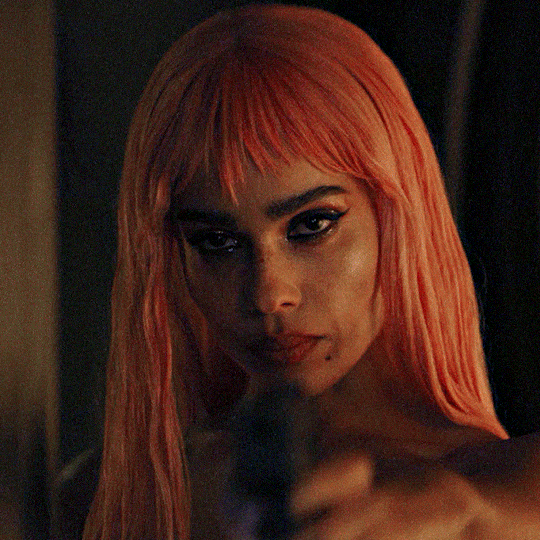
Jordan Baker (The Great Gatsby): Clever, charming, and unpredictable.
Marion Crane (Psycho): Secretive, impulsive, and multifaceted.
Cancer Moon - Norma Desmond (Sunset Boulevard): Emotionally intense, nostalgic, and manipulative, the Cancer Moon femme fatale is a complex character. Like Norma Desmond, she may cling to the past and use her vulnerability to control others. Additionally...
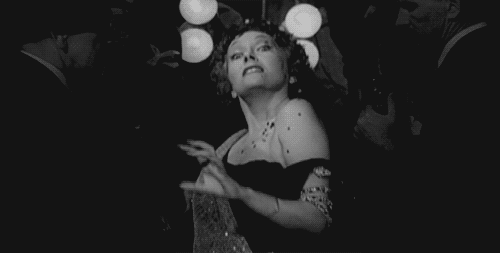
Annie Wilkes (Misery): Obsessive, nurturing, and unstable.
Alex Forrest (Fatal Attraction): Clingy, possessive, and emotionally demanding.
Leo Moon - Foxxy Cleopatra (Austin Powers in Goldmember): Confident, dramatic, and alluring, the Leo Moon femme fatale knows how to command attention. Like Foxxy Cleopatra, she's bold, charismatic, and always steals the spotlight. Additionally...

Marilyn Monroe (The Seven Year Itch): Charismatic, flirtatious, and attention-seeking.
Jessica Rabbit (Who Framed Roger Rabbit): Seductive, enigmatic, and theatrical.
Virgo Moon - Catherine Tramell (Basic Instinct): Intelligent, calculating, and mysterious, the Virgo Moon femme fatale is a master of manipulation. Like Catherine Tramell, she uses her intellect and attention to detail to outmaneuver others. Additionally...

Tracy Lord (The Philadelphia Story): Perfectionist, analytical, and critical.
Amy Dunne (Gone Girl): Cunning, organized, and vengeful.
Libra Moon - Gilda (Gilda): Charming, sophisticated, and flirtatious, the Libra Moon femme fatale is a social butterfly. Like Gilda, she knows how to use her charm and beauty to captivate and influence others. Additionally...
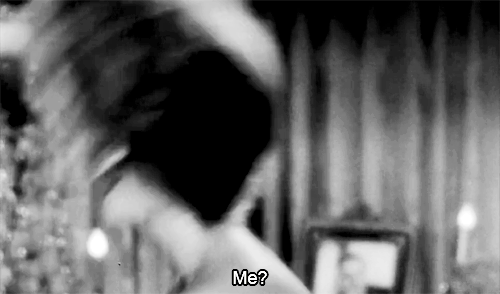
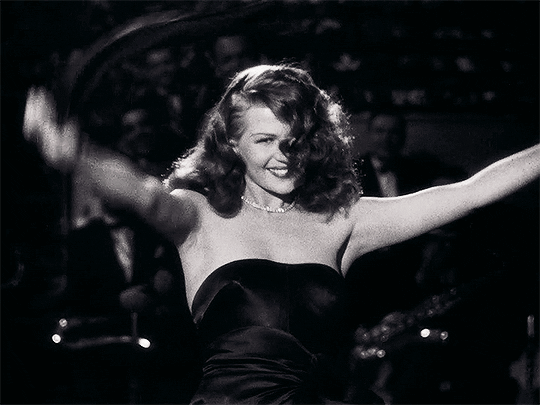
Madeleine Elster (Vertigo): Elegant, charming, and mysterious.
Daisy Buchanan (The Great Gatsby): Charming, indecisive, and idealistic.
Vesper Lynd (Casino Royale): Sophisticated, diplomatic, and elusive.
Scorpio Moon - Phyllis Dietrichson (Double Indemnity): Intense, secretive, and seductive, the Scorpio Moon femme fatale is a master of psychological manipulation. Like Phyllis Dietrichson, she uses her sexual allure and emotional depth to ensnare others. Additionally...
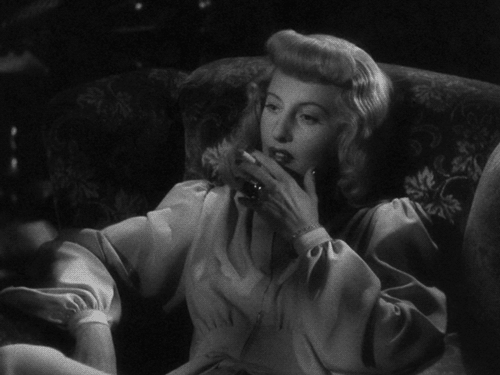
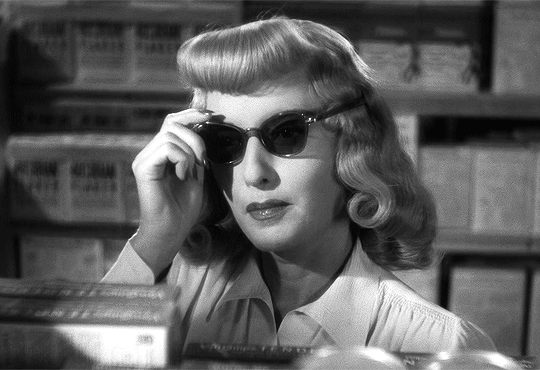
Cersei Lannister (Game of Thrones): Power-hungry, manipulative, and intense.
Brigid O'Shaughnessy (The Maltese Falcon): Mysterious, alluring, and deceitful.
Sagittarius Moon - Beatrix Kiddo (Kill Bill): Independent, adventurous, and philosophical, the Sagittarius Moon femme fatale is a free spirit. Like Beatrix Kiddo, she's a skilled warrior who follows her own moral code and seeks justice on her own terms. Additionally...
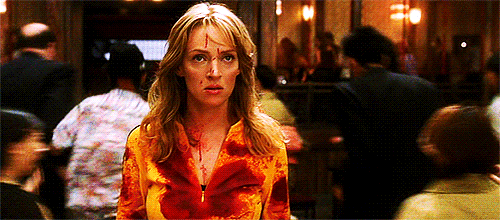
Nikita (La Femme Nikita): Rebellious, independent, and adventurous.
Lisbeth Salander (The Girl with the Dragon Tattoo): Unconventional, daring, and justice-seeking.
Capricorn Moon - Miranda Priestly (The Devil Wears Prada): Ambitious, disciplined, and powerful, the Capricorn Moon femme fatale is a formidable presence. Like Miranda Priestly, she's a master of her craft and expects nothing less than perfection from herself and others. Additionally...

Evelyn Mulwray (Chinatown): Reserved, ambitious, and secretive.
Lady Macbeth (Macbeth): Ambitious, manipulative, and ruthless.
Aquarius Moon - Mia Wallace (Pulp Fiction): Unconventional, independent, and mysterious, the Aquarius Moon femme fatale is a true original. Like Mia Wallace, she marches to the beat of her own drum and isn't afraid to break the rules. Additionally...
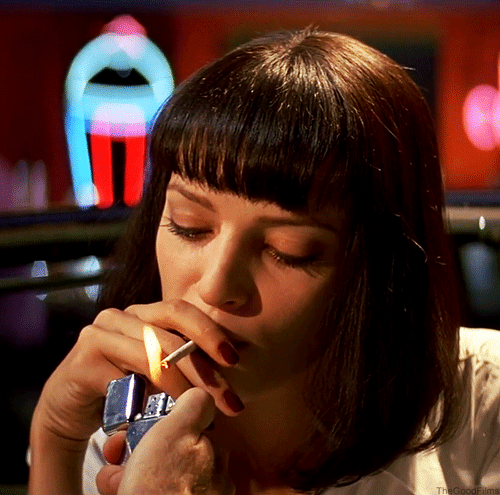
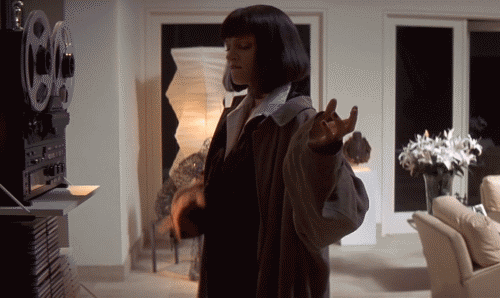
Mathilda (Léon: The Professional): Unconventional, intelligent, and rebellious.
Clementine Kruczynski (Eternal Sunshine of the Spotless Mind): Eccentric, free-spirited, and unpredictable.
Pisces Moon - Nina Sayers (Black Swan): Imaginative, emotionally vulnerable, and self sacrificing. Like Nina, she uses her damseled distress and emotional depth to draw others into her web of desire and deceit. Additionally...
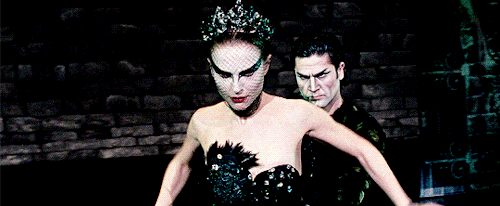
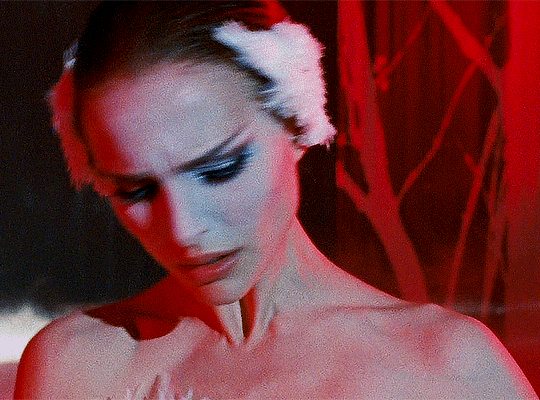
Melissa Robinson (The Last Seduction): Deceptive, adaptable, and seductive.
Laura Hunt (Laura): Elusive, enigmatic, dreamy, and idealization.
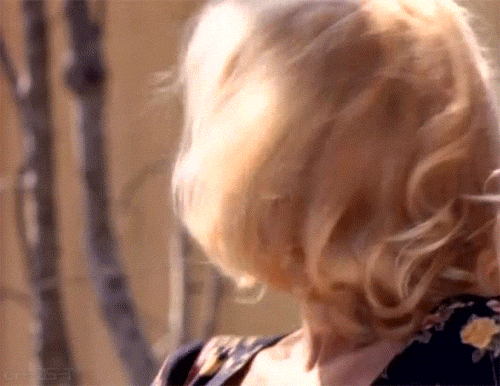
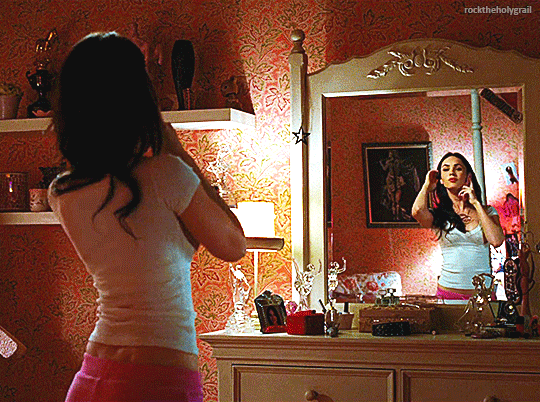
#astrology#zodiac#natal chart#sagittarius#astro notes#libra#capricorn#astro observations#virgo#synastry#femme fatale#femme#gemini#pisces#aquarius#taurus#aries#cancer moon#astrology observations#scorpio moon#astro community#scorpio
1K notes
·
View notes
Text
👑🌹The Queen of Love and Beauty🌹👑
Round 1 (4 of 6)
The Queen of Love and Beauty shall hold the honour of presenting unto the winner of the Tournament his Champion's Coronet.
Vote for the lady who, to you, best exemplifies feminine dignity, grace and loveliness
The six contenders with the most votes will advance.



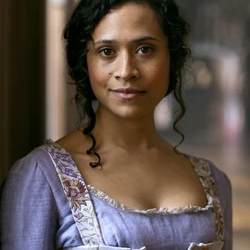








Row 1 - Lady Marian Fitzwalter [Olivia de Havilland], The Adventures of Robin Hood (1938) - Lady Marion of Leaford [Judi Trott], Robin of Sherwood (1984-1986) - Lady Marian [Audrey Hepburn], Robin & Marian (1976)
Row 2 - Guinevere [Angel Coulby], BBC’s Merlin (2008-2012) - Morgana Pendragon [Katie McGrath], BBC’s Merlin (2008-2012) - Morgana Pendragon [Eva Green], Camelot (2011)
Row 3 - Aliena [Hayley Atwell], The Pillars of the Earth (2010) - Æthelflæd of Mercia [Millie Brady], The Last Kingdom (2015-2022) - Marian of Knighton [Lucy Griffiths], BBC’s Robin Hood (2006-2009)
Row 4 - Catherine of Aragon [Maria Doyle Kennedy], The Tudors (2007-2010) - Djaq [Anjali Jay], BBC’s Robin Hood (2006-2009) [1] - Roberta Steingas [Clare Foster], Galavant (2015-2016) [1]
120 notes
·
View notes
Text

DOLL︰PUPPET ID PACK

NAMES︰ abbie. adelaide. adorablesse. adorablette. aerlyn. alena. alexis. alice. amaia. amaya. andrea. angeline. ankou. annabelle. annie. antoinette. anxiette. anxious. apricot. asaka. ash. asha. aspen. atticus. ava. avel. babette. babydoll. bambi. bambina. bambino. bashfelle. bashful. beau. bellamy. belle. bells. bernadette. blu. blue. bluesse. bluette. blushe. blushesse. blushette. boo. bram. bronach. bronagh. brone. button. buttons. cadel. candace. carmilla. carrie. catherine. cessair. charlie. charlott. charlotte. chelsea. chia. chica. chirella. chirelle. chiwa. chuckie. claeg. coffin. colere. commedia. constance. coquette. cordelia. corelle. corette. corsette. cypress. dahlia. dalia. damon. darling. dawn. dearesse. dearest. dearette. dearie. deidre. demure. desdemona. devin. devon. doilie. doily. doll. dollaintye. dollawie. dollerie. dollesse. dollette. dolleyed. dollie. dolline. dollita. dolly. dolores. dottie. drea. dread. drusilla. dáinn. eeria. eldritche. elissar. eliza. elle. elodie. eloise. emerence. emily. essie. esther. evangela. evangeline. evelyn. eveyln. faith. frill. frillette. genevieve. genoveva. gia. gladys. glorie. glory. gorey. gorie. gracelyn. gregory. gretta. gwen. gwenivive. haldor. haunt. hiccup. hyde. iraia. iresse. irette. itishree. jabez. janelle. janet. jannet. jinx. josie. julie. juniper. juno. kailey. kanani. kewpie. kiva. krak. lace. lacesse. lacette. lacey. lacie. lain. laintess. lakka. lalki. lavender. lea. lefu. letta. letum. libitina. lilac. lillith. lilly. lily. loaela. lola. lolah. loletta. lolita. lolite. lolla. lottie. lovelace. luci. lucius. lulu. lute. lyla. lys. madison. mahina. mandy. mannie. manon. many. mara. maria. marianette. marie. marion. marionette. marionne. marotte. marrionette. marrow. mary. maryjane. marzana. maveth. meek. melanie. melodie. melody. merripen. miel. minuette. mold. moldie. moldy. molly. moonie. moore. morana. morgana. morgue. mors. mort. mot. muriel. murmur. muse. nadine. nadzen. nancy. nanea. nanelle. nanette. nappi. naz. negan. nekane. nelly. nemesis. nettie. nicodème. niegan. nimbus. nina. nuri. olive. oliver. olivia. omega. panchaali. parner. pinkesse. pinkette. pinkie. pinky. pinocchio. pippin. poe. poppet. poppette. poppy. porce. porcelain. porcelynn. prantika. pulau. punthali. pupetta. puppet. puppetear. puppetesse. puppetette. puppette. puppyte. putala. quinn. ravanche. raven. realiteer. rebel. ribbon. ribbonne. riley. rion. robert. rose. rubella. ruby. sacrifette. salem. sasha. satin. scarlet. sebastian. sew. sewine. shivani. shiver. sidney. smierc. smiley. smilie. softesse. softette. softie. solikha. spirit. sprout. statuette. stitches. strings. sweeheart. sweetheart. sweetie. sweetiebelle. sweetine. sychar. teacup. tearie. teddy. tempest. thalia. than. thana. theodora. thorn. trembelle. trista. ultima. ulysses. vanessa. vera. viola. visage. whisp. whisper. willow. winston. wisp. wispera. wrathes. zizi.

PRONOUNS︰ adorable/adorable. ae/aer. angel/angel. anger/anger. antique/antique. app/apparition. bell/bell. berry/berry. berserk/berserk. bjd/bjd. bla/black. blank/blank. bliding/bliding. blue/blue. blush/blush. bug/bug. button/button. cake/cake. car/carcasse. cheer/cheer. cloth/cloth. coffin/coffin. control/control. coo/croon. cor/cor. cor/corrupt. core/core. corpse/corpse. coy/coy. crack/cracked. cracked/cracked. cre/creepy. creep/creepy. cu/curse. cu/cute. curse/curse. cute/cute. da/dark. de4/de4d. de/dear. de/demure. dea/dead. dead/dead. dead/death. dear/dear. death/death. decay/decay. delica/delicate. delicate/delicate. demon/demon. despair/despair. dirt/dirty. do/doll. doll/doll. doll/dolly. dolly/dolly. dread/dread. dress/dressup. dress/up. d♡ll/d♡ll. eer/eeerie. elegant/elegant. en/energy. end/end. evil/evil. eye/eye. fabric/fabric. fae/fae. fi/figure. fig/figure. figurine/figurine. flower/flower. fragile/fragile. frail/frail. friendly/friendly. frill/frill. fury/fury. gho/ghost. glass/glass. glo/gloomy. gore/gore. grave/grave. grief/grief. grim/grimm. grime/grime. gru/grudge. ha/haunt. happy/happy. haun/haunt. hx/hxm. h♡/h♡m. it/it. joint/joint. joint/jointed. joy/joy. ke/ker. kew/kewpie. kill/kill. kor/kor. kor/korrupt. la/lace. lace/lace. lae/lace. lo/love. lo/loved. lolita/lolita. love/love. mad/mad. mae/mae. mari/marionette. marionette/marionette. me/meek. mi/mier. mim/mimic. model/model. morbid/morbid. mu/mutter. mur/murmur. nap/nap. null/null. ny/nym. patch/patch. phan/phantom. pink/pink. pitter/patter. plastic/plastic. play/play. play/playtime. play/time. plush/plush. plush/plushie. por/porcelain. porce/porcelain. porcel/porcelain. porcela/porcelain. porcelain/porcelain. pose/pose. pose/posed. possess/possessed. pup/puppet. puppet/puppet. rea/reality. rest/rest. reven/revenge. rib/ribbon. ribbon/ribbon. rot/rot. scare/scare. scary/scary. seem/seem. sew/sew. sew/sewn. shi/shift. shi/shiver. shx/hxr. sh♡/h♡r. sie/sier. silk/silk. slee/sleep. sleep/sleep. smile/smile. snap/snapped. sneak/sneak. soft/soft. sou/soul. spi/spider. spi/spirit. spo/spook. spook/spook. sta/stalk. sta/stare. statue/statue. sti/string. stitch/stitch. string/string. sweet/heart. sweet/sweet. sweet/sweetdolls sweetie/sweetie. ta/tap. te/teer. tea/teatime. teeth/teeth. thre/thread. thread/thread. thxy/thxm. th♡y/th♡m. ti/timid. to/toy. toy/toy. toy/toytime. trick/trick. un/canny. unca/uncanny. ve/ver. vey/vem. vi/vr. vintage/vintage. vomit/vomit. wan/wander. watch/watch. whi/whisper. white/white. wilt/wilt. wood/wood. wrath/wrath. yarn/yarn. zzz/zzz. ♡/♡. ⚰️ . 🍨 . 🛌 . 🛏️ . 🥀 . 🧸 .

#pupsmail︰id packs#id pack#npt#name suggestions#name ideas#name list#pronoun suggestions#pronoun ideas#pronoun list#neopronouns#nounself#emojiself#dollkin#puppetkin#toykin#dollcore
250 notes
·
View notes
Text
Make the Exorcist Fall in Love - Witches Part 3
Links to Part One and Part Two
This is an update to my previous posts on the Witches in Make the Exorcist Fall in Love I’m adding another possible origin for Charlotte’s name, information on medieval conceptions of Virgil the poet, and a brief addition on demonological references within Ekuoto.
Content warning for reference to sexual violence and misogyny
Charlotte
Previously I mentioned that a potential origin for Charlotte's name was as a reference to a Charlotte Perkins Gilman short story, "When I Was a Witch." However, I recently found another possible source that I think is also worth noting, which is Jules Michelet's La Sorcière, a 19th century text on the history of witchcraft, including a witchcraft case involving a woman named Marie-Catherine Cadière, who in some versions of Michelet's book is referred to as Charlotte.
As background context, I was reading Marion Gibson's Witchcraft: A History of Thirteen Trials recently, and in one chapter she writes about the witch trial of Marie-Catherine Cadière and Jean-Baptist Girard from 1730-1731 in France. This is a fairly well documented event, so I'll only provide a short version of the circumstances as those who wish to read more can do so, although I should warn that the details are upsetting. Cadière had been a member of a religious group led by a Jesuit priest, Jean-Baptiste Girard. While a part of this religious group, formed mainly of women, she began experiencing religious visions, which Girard capitalized on. Later on, Cadière accused Girard of several things, including rape and witchcraft. In response, Girard accused her of slander. In the end, both were acquitted of their charges. The trial was highly publicized in it's time, including internationally. I was able, for example, I was able to find a 1730 English language text on the case in it's tenth edition.
Later on, in the 19th century, this case was also described in La Sorcière by Jules Michelet (known as Satanism and Witchcraft in English). The book "stated that medieval and Renaissance French 'witches' had been early pantheists too: revolutionary pagan priestesses, healers, and mesmerists, sexually liberated, and in touch with an old deity wrongly demonized as Satanic" (Gibson 150).
It should be noted that his historical analysis in this book is considered fairly inaccurate by current scholars (its style of historical writing is also painfully 19th century), but as a text it's had a lot of impact in the way witch trials are thought about in the popular imagination. I've paged through some of the translation available on Project Gutenberg. Here's some quotations I think are interesting in considering this text in relation to ekuoto:
"At what date, then, did the Witch first appear? I say unfalteringly, 'In the age of despair:' of that deep despair which the gentry of the Church engendered. Unfalteringly do I say, 'The Witch is a crime of their own achieving.'" (Michelet 9)
"In its earliest phase the Black Mass seemed to betoken this redemption of Eve, so long accursed of Christianity. The woman fills every office in the Sabbath. She is priestess, altar, pledge of holy communion, by turns. Nay, at bottom, is she not herself as God?" (Michelet 148)
Michelet also, according to Gibson, repeatedly calls Cadière the wrong name in the book, referring to her as Charlotte instead of Marie-Catherine. Here's an important caveat though. For whatever reason, the French edition on Project Gutenberg does not use this mistaken name, nor does the English translation available on it. I was, however, able to find another English translation that refers to her as Charlotte. Additionally, the wikipedia article on the book refers to her as Charlotte, which suggests to me that either that editor read one of the translations I came across or another one that also maintains that error. Now, I don't know exactly what is going on, but I have several theories that I unfortunately don't have the resources or the energy to fully investigate.
An early version of the original French may have mistakenly referred to her as Charlotte, and the version on Gutenberg is from a later reprint that fixed that error
An early English translation of the text mistakenly referred to her as Charlotte, and the mistake is not actually Michelet's but has been spread around in English
Control + F was not working right for me (I do not speak French and used control + f rather than scroll through)
Now, regardless, it doesn't really matter for our purposes. Ultimately, if the text is being referenced, depending on the edition the authors of ekuoto came across, it seems entirely possible that this mistake was present in that edition. Which, again, I don't find it improbable that they may have come across the text, as it popularized a sort of imagining of those accused of witchcraft in Early modern Europe as feminist rebels against the church, and while it's analysis isn't held as historically accurate anymore, it has popularized ways of thinking about witch trials outside of academic circles. This presentation also super lines up with how the witches have been presented in Ekuoto. The book is also less niche than the Gilman story. But, again, Charlotte is a majorly popular name, and the historical Cadière, although heavily referenced in Michelet's book, is not the main figure of it. I did however consider it an interesting enough possibility that I thought it was worth bringing up.
Also, randomly, Michelet's book was apparently the inspiration for the 1973 animated movie Belladonna of Sadness. The more you know.
Virgil the Sorcerer
Speaking of names: Vergilius. On one hand, his name is an obvious reference to Virgil from the Divine Comedy. However, if you were to page through Michelet's book, you'd also see several references to Virgil as a magician. This is because there was a medieval conception of him as a sorcerer. Which I think is hilarious. Virgil's all over the place status in stories is so funny to me because like, he was a real guy. People have been making shit up about him for centuries. Anyways, I read an article, which I'll cite at the bottom, about how this association came to be. The short of it is that he became associated with the idea of prophecy and people started telling stories about him as a magical figure at least by the 12th century and giving him increasingly complex backstories (that I should mention have nothing to do with his historical background LMFAO). Like, magical girl backstory shit. Like his mom was a fairy and he was born with a divine symbol on his forehead before becoming magical at age 14 level stuff. Unfortunately the article didn't include any of the stories, because I was so deeply fascinated. He's a fairy tale figure at this point, and often a mentor figure. As the article states, "Almost all the tales present Virgil as an essentially benevolent character who helps the underdog, and is always ready to punish the wicked" (Wood 94-95). He's like a helpful wizard archetype.
Now, there's a medieval story that sort of doesn't follow this storyline called Virgil in the Basket. It's a sort of misogynistic story with a big "don't trust women, they'll trick you!" theme, where Virgil is tricked by a woman who promises to pull him up into her bedroom in a basket. Instead, she traps him in the basket for everyone to laugh at. He then takes revenge by making all the fires in town go out, with them only being able to be ignited again from her genitalia. This second section seems to have decreased its appearance in artistic renditions of the story as time went on, with the basket section being more focused on.
Later on in the early 20th century, Andrew Lang included a version of the story called "Vergilius the Sorcerer" in his The Violet Fairy Book. In it, Virgilius is a young bookworm who's been sent alone to Toledo following the death of his father. He ends up tricking a spirit in a cave into giving him books to learn magic, which he then uses in various ways to solve problems he comes across. He falls in love with a young woman, who tricks him with the basket. The cruder punishment Lang changes to just having fire appear from her, so she has to stand in the town square for three days for everyone to get fire again. He later falls in love with a princess, who turns against her father for him, and they found Naples and it talks a lot about how a tower in Naples is built on a foundation made of eggs, which appears to be another Virgil legend: https://en.wikipedia.org/wiki/Castel_dell%27Ovo.
Anyways, I think that's an interesting set of info on Vergilius--his name is both a Divine Comedy reference, and also referencing a period of Medieval folklore that places Virgil as a magician.
Lucifer and Others
Also, I thought it was worth mentioning that Make the Exorcist Fall in Love bases it's hierarchy of demons (with Lucifer as Pride, Satan as Wrath, etc etc) on Peter Binsfeld's description of them in Treatise on the Confessions by Evildoers and Witches, a demonological text from the 16th century. Unfortunately, it was not translated into English until 2024 so I was unable to read it, and the only copy I could find for free was in Latin, which I do not know. In all likelihood, Ekuoto is not directly in conversation with this text but rather it's lasting memory in the cultural consciousness, as this assignment of demons to sins is pretty common as the text was very influential. I wanted to read it though...
Book of Enoch and Paradise Lost
Others have explained the influence of the Book of Enoch on Ekuoto far better than I have, so I will only touch on it to say that I am in agreement with others statements that the section on the Nephilim is in reference to it. The presence of the flood is the nail in the coffin for me.
I recently made myself actually sit down and read Paradise Lost and found that it also appears to reference the Book of Enoch. As far as I can tell, the Bible does not actually connect the flood with nephilim, just generalized wickedness (and feel free to correct me if I'm wrong!). Paradise Lost, however, connects the two as does the Book of Enoch. Which, I think is interesting. I've seen lots of buzz about the potential relation Paradise Lost might play in this arc because of the role of Lucifer. I would be really interested to see if that's the case. My key things I'd be interested in seeing are:
how it might engage with the themes of gender and sexuality in Paradise Lost. I found it very very "yay patriarchal heterosexual unions!" in it's presentation of Adam and Eve, but it also simultaneously has a section where Raphael says the angels have like spiritual rather than bodily sex but also all the angels depicted are men. Since we've seen Ekuoto engage and subvert the themes of misogyny in other texts, so I'd be interested in seeing how it engages with this one
The singular Mammon dig in the poem that's like this dude wasn't even good in heaven he was staring at the gold sidewalks all the time
The fallen angels of the poem are punished physically by being turned into serpents after Lucifer/Satan causes Adam and Eve to eat the apple. The fallen angels in Ekuoto also seem to have experienced some sort of physical change in relation to their fall -> what caused that?
Other Assorted Notes on Names
I do want to really emphasize though that everyone's name in Ekuoto has seemingly been a direct reference to either a literary figure or a Biblical character, outside of Imuri it seems, unless she's also some literary reference I'm not aware of. Her surname, Atsuki contains the kanji for love and moon, but as for her first name idk what the deal is. I tried looking it up, and best I could find was that her name is also the name of a sci fi seinen manga that ran from 2006 to 2020, so I'll do research on that end. It does involve people frozen in ice though so like hrmm...
I still don't feel confident pinning down what Charlotte's name is in reference to. But, if we get more on her I'm sure it will become more clear, and I feel we will since we haven't gotten any of her past despite being a senior member of the witches , and since her romantic feelings for Vergilius haven't been fully dealt with.
Leah and Daniel are both names from the Bible. Barbara is the name of a Saint. Dante is obviously Dante (which idk if anyone cares but Dante was historical Dante's nickname, Dante is the shortened form of the name Durante). The Book of Mark from the bible is called マルコ福音書 in Japanese, or the Gospel of Marco so I guess that's where Marco's name is from.
As for the other people I'm unsure of: Mother Rosa could possibly be a reference to Rosa Mystica, a name for Mary. Idk about Asmodeus's nickname Aria. Aleksandra I am also not sure about. Manon, as I've mentioned, is possibly Manon of The Craft but that feels way too contemporary in comparison to the rest of the cast so I'm also holding off until we learn more about her. Mikhail -> Archangel Michael feels just way too on the nose, especially since Archangel Michael gets mentioned frequently enough so I'm also holding off on him. Tachibana is another shrug, although according to the wiki her name uses the kanji 立花 if that's of any help to anyone. Of Leah's friends and family, I feel certain her father Hans and her friend Ella's names are taken from Grimm's Fairy Tales, what with the (not Grimm's) fairy tale references to Baba Yaga in her arc. Not sure about her brother Leo though, although it's another very common name and was the name of several popes. Minor character Charles (church guy with a mustache who I also believe has one or two files in the volumes) is another shrug. Pope Johannes and Cardinal Heisenberg are two other shrugs. Luka is another shrug also but means light so that may just be the only deal w it. Yamato and Catherine are both demons whose names aren't taken from demonological sources or just general religious sources. Not sure what the deal is with Yamato, especially since he was such a minor character. Really not sure what the deal with Catherine is either. I was totally throwing my hands in the air with her and the best I could come up with is that there is a video game called Catherine and apparently there is a succubus in that, or Catherine of Wuthering Heights but that's just because she was the most famous literary Catherine I could think of. I was trying to see if there was any connection based on her headless horse and horseman, so I looked into some stuff along those lines but couldn't find the name Catherine in relation to any Dullahan stories or in Legend of Sleepy Hollow. Abbot Nicholas I'm also not sure, but may be a reference to Saint Nicholas of Myra.
I will say, while I was looking up Saint Nicholas of Myra, I found that one of his most famous legends is about trying to sneak money to a father who'd lost all of his money, could not longer afford dowries for his three daughters, and so the daughters were going to have to become sex workers (the father's role in this varies in the stories I was seeing, with some portraying him as more reluctant and others stating he would sell them to a brothel with less of an emphasis on reluctance. None of the stories I saw seemed to have any real interest in what the daughters thought about all of this whole situation, although to be fair I only came across a few) (this is also where Santa putting gifts in stockings came from apparently?). This could totally be a coincidence in terms of naming, but it did make me take note of it. But, again, he could be called Nicholas for completely unrelated reasons, and in reference to another Nicholas. Saint Nicholas of Trani, for example, was a Saint who repeated the Kyrie over and over again so much that his mother worried he was possessed, which again, is another hmm moment for me what with Nicholas ekuoto's possession. If anyone has any suggestions for any of these characters, or anyone I may have missed, I'd love to hear it! I tried going through the character poll to try and avoid missing anyone but who knows haha.
Anyways, that's all for now! I've got a meta on the image of the forests in the story in the works but I think I'm going to hold off on it until we get more Baba Yaga. I also have another meta prepped for when the latest case files are translated. I don't want to spoil it for anyone, but I parsed through a google translate of them and there's some really interesting stuff in there.
Citations:
Gibson, Marion. Witchcraft: A History in Thirteen Trials. Scribner, 2024.
Wood, Juliette. “Virgil and Taliesin: The Concept of the Magician in Medieval Folklore.” Folklore, vol. 94, no. 1, 1983, pp. 91–104. JSTOR, http://www.jstor.org/stable/1260172. Accessed 12 Mar. 2025.
Was too lazy to write this citation but the version of Michelet's book I read: https://www.gutenberg.org/ebooks/31420
#mtefil#make the exorcist fall in love#ekuoto#meta#exorcist wo otosenai#Sorry for no pictures in this post and just walls of text#I'm thinking about updating more on the literary references post#Awhile back I saw a post from a fan in Japanese that made it clear#That some of the chapter titles weren't translated correctly and are#actually book titles#End of Adolescence for example is actually a literal translation of the Japanese title for Childhood's End#The Arthur C. Clarke book from 1953#Which I read through and was like oh. I see.#There may be other titles that unfortunately did not get retranslated to English with the same title
20 notes
·
View notes
Text
mordred through time (movies, tv shows, opera and musicals)
Part 2: From 1982 to 2002
Other Parts: Part 1: From 1949 to 1981 -> here Part 3: From 2002 to 2010 Part 4: From 2014 to 2017 Part 5: From 2018 to 2023
EDIT: There is a mistake in the video, Blind Guardian's Mordred's song was released in 1995 not 1989, so I corrected it in the description.
Complete list of part 2 media with extra information and some of my thoughs regarding the evolution of Mordred’s role is under cut.
We left part 1 with Mordred appearing only as a generic villain not related to Arthur until 1960 where White's novel is adapted into a musical. The musical follows the novel enough to introduce Mordred as Arthur's incestuous son with Morgause. Since then the "son" element has been kept in almost every single adaptation. We also have the first tv iteration of Mordred as Morgana's son instead of Morgause: Excalibur 1981.
This is not only the first time we see Morgana as his mother on tv, but also one of the first time ever. I made a list of the evolution of Mordred's mother in novels here.
You can see Morgause is pretty constant until 1980-1982. I have no idea what happened in those years but for the first time we have the 1980 novel "Firelord" by Parke Godwin itroducing Morgana as Mordred's mother instead of Morgause (in this case Morgause is completely eliminated). The 1981's movie Excalibur does something similar (Morgause is eliminated and Morgana absorbs her role), and I am pretty sure it could not have been influenced by "Firelord", given the two events happened so close in time (and less than a year is not usually sufficient to write and produce a movie). In 1982 Marion Zimmer Bradley published "The Mists of Avalon" which does something similar to Catherine Christian's "Pendragon": Morgause is still officially Mordred's mother by adoption.
From this point onwards you will see that Morgause ends up completely eliminated in her role as Mordred's mother from future movies and tv shows.
Full list for part 2 and more info:
1982 Camelot: I wrote a bit about the musical in part 1. This is a stage adaptation filmed live, so it retains all the songs (even Mordred's songs previously cut in the movie) and Richard Backus plays Mordred.
1984 Morte d'Arthur: A tv movie that probably was preserved thanks to Jeremy Brett's popularity as he played King Arthur. This movie is a strange adaptation of Morte d'Arthur, with the actors playing the scenes on a stage with no dialogue. A narrator tells the tale (and the dialogues themselves). Nickolas Grace played Mordred.
1985 Merlin and the Sword: Also known as "Arthur the King", this movie actually exists in two versions, the cut version missing some scenes (Arthur's funeral apparently!). The movie focuses mainly on Merlin, Arthur, Guinevere and Lancelot and Mordred plays the role of Arthur's son (from Morgana) and a kind of minor comedic fumbling villain. He was played by Joseph Blatchley.
1988 New Adventures of a Yankee in King Arthur's Court: One of the many adaptations of Mark Twain's novel, this one is a bizarre Ukranian (Soviet) movie that depicts Hank Morgan as a destructive force in Camelot. The movie is absolutely stunning, but being in Russian I could not understand the dialogue. Mordred plays a very minor role, he is Morgana's son and he is killed by Hank in a treacherous duel (Hank shoots him). His death is what leads Arthur and Morgana to ally to try and defear Hank Morgan. Mordred is played by Ukranian actor Mark Gres.
1989 Mordred's song by Blind Guardian: the correct date is 1995.
1989 A Connecticut Yankee in King Arthur's Court: This is without a doubt my favorite adaptation of Twain's novel. Here Hank Morgan is actually a little girl called Karen. Mordred is a comedic-like antagonist and the main antagonist of the movie, played by Hugo Blick (who is mainly known now as a movie director).
1989 Doctor Who Battlefield: This is a 4 episodes arc in the 26th season of Doctor Who, with the Seventh Doctor being revealed as Merlin. Later on it was adapted into a novel. The episodes are set in modern times, with Morgana and her son Mordred having survived Camlann and travelling through time. Mordred is mainly shown to hate a new knight called Ancelyn who also survived Camlann. Christopher Bowen played Mordred.
1995 Mordred's song by Blind Guardian: So I decided to add the few songs/album that acts like a "Mordred's point of view/as if he was singing" kind of media. The singer here is singing as Mordred. It was also used in this 2016 rap song!
1998 Merlin: Probably one of the most popular arthurian miniseries! It follows the life of Merlin, from his childhood to his elderly years and the second episode mainly focus on Camelot and Arthur. Mordred is Morgana and Arthur's son, magically aged (like we saw in Excalibur 1981) and he becomes the main villain of the story alongside Mab. He is played by Jason Done.
2001 The Mists of Avalon: This is a miniseries adaptation of Marion Zimmer Bradley's novel, focusing on Morgana, Arthur and Guinevere. In my opinion it makes the novel much more palatable and easier to digest. Mordred here appears once more as Morgana's son, but he is a adopted by Morgause and raised to hate Arthur. Mordred is the main antagonist in the second part, and his character here is turned into an almost sympathetic villain. Hans Matherson played adult Mordred (I was obsessed with that man 15 years ago).
2002 Justice League (and the 2004 sequel Justice League Unlimited): Justice League (two seasons) and Justice League Unlimited (3 seasons) are animated shows (for a younger audience) which adapts some stories from DC (both DC and Marvel have interations of Morgana and Mordred). Mordred is a kid (Morgana put a spell on him to keep him young) and immortal, both him and Morgana are villains who use magic. He is voiced by Soren Fulton.
A small note: All these movies here are for tv! Cinematic releases for arthurian movies in general do not seem to be as prominent. It is kind of heartbreaking noawadys to see the disappearance of cheap tv movies.
#mordred#camelot#morgause#morgana#doctor who#merlin#the mists of avalon#mists of avalon#morte d'arthur 1985#camelot musical#characters through time#justice league#a connecticut yankee#connecticut yankee 1989#mordred through time#mordredmother#Mordred through time#info#meta
20 notes
·
View notes
Note
Which of the engines are married?
A lot :)
Thomas is married to Rosie
Gordon is married to Annie
Edward is married to Emily
Toby is married to Henrietta
Donald is married to Daisy
Duck is married to Flora
Skarloey is married to Millie
Duncan is married to Madge
Oliver is married to Isabel
Sir Handel is married to Elizabeth
James is married to Molly
Henry is married to Caitlin
Clarabel is married to Hank
Boco is married to Ashima
Lady is married to Dodge
Frieda is married to Ivan
Duke is married to Catherine
Stepney is married to Bluebell
Dennis is married to Pip (opposites attract)
if I have any more ship ideas, I'll add them here
Percy and Mavis are dating, but not married bc Percy's just a kid.
Philip has a one-sided crush on Marion. He's a simp. So, not married.
Rusty and Peter Sam are in a queerplatonic relationship. They are BFF. Luke and Rusty are dating, but not married for the same reason Percy's not married. (I just started shipping Rusty x Luke -- it's so cute (˶˃ ᵕ ˂˶)
Stanley is dating Jenny Wakeman from My Life as a Teenage Robot (i'm not kidding, i legit ship them)

^me shipping all these trains in a nutshell
#ask#answered#ttte#thomas and friends#there's too many characters to tag#ttte ships#ttte shipping#shipping#my ships#i'm a multishipper?#crossover ship
7 notes
·
View notes
Text
G’eth Character Name Bank
First Names
Masculine Names
Alfred, Andrew, Arlo, Arthur, Balthazar, Barry, Ben, Benedick, Bernard, Burchard, Cedric, Charibert, Crispin, Cyrill, Daegal, Derek, Digory, Drustan, Duncan, Edmund, Edwin, Elric, Evaine, Frederick, Geffery, George, Godfreed, Gregory, Guy, Harris, Harry, Horsa, Hugh, Humphrey, Iago, Jack, Jeremy, John, Kazamir, Kenric, Lawrence, Leoric, Lorik, Luke, Lynton, Lysander, Madoc, Magnus, Maukolum, Micheal, Miles, Milhouse, Mordred, Mosseus, Ori, Orvyn, Neville, Norbert, Nycolas, Paul, Percival, Randulf, Richard, Robert, Roderick, Stephen, Tennys, Theodoric, Thomas, Tristan, Tybalt, Victor, Vincent, Vortimer, Willcock, Willian, Wymond
Feminine Names
Adelin, Alice, Amelia, Beatrix, Beryl, Bogdana, Branwyne, Brigida, Catalina, Catherine, Claudia, Crystina, Deanna, Desdemona, Elaine, Elinora, Eliza, Enide, Eva, Ferelith, Fiora, Freya, Gertrude, Gregoria, Gueanor, Gwen, Gwendolyn, Hannah, Hegelina, Helen, Helga, Heloise, Henrietta, Igraine, Imogen, Jacquelyn, Jane, Jean, Jenny, Jill, Juliana, Juliet, Katie, Leela, Lettice, Lilibet, Lilith, Lucy, Luthera, Luz, Lyra, Malyna, Margherita, Marion, Meryl, Millie, Miranda, Molle, Morgana, Morgause, Nezetta, Nina, Novella, Olwen, Oriana, Oriolda, Osanna, Pamela, Petra, Philippa, Revna, Rohez, Rosalind, Rose, Sallie, Sarra, Serphina, Sif, Simona, Sophie, Thomasine, Tiffany, Ursula, Viola, Winifred, Yrsa, Ysabella, Yvaine, Zelda, Zillah
Gender-Neutral/Unisex Names
Adrian, Alex, Aiden, Arden, Ariel, Auden, Avery, Bailey, Blaire, Blake, Brett, Breslin, Caelan, Cadain, Cameron, Charlie, Dagon, Dana, Darby, Darra, Devon, Drew, Dylan, Evan, Felize, Fenix, Fernley, Finley, Glenn, Gavyn, Haskell, Hayden, Hunter, Jace, Jaime, Jesse, Jo, Kai, Kane, Karter, Kieran, Kylin, Landon, Leslie, Mallory, Marin, Meritt, Morgan, Nell, Noel, Oakley, Otzar, Paris, Peregrine, Quant, Quyn, Reagan, Remy, Robin, Rowan, Ryan, Sam, Samar, Sasha, Sloan, Stace, Tatum, Teegan, Terrin, Urbain, Vahn, Valo, Vick, Wallace, Waverly, Whitney, Yardley, Yarden, Zasha
Surnames
Surnames, Patrilineal - First Name (Patrilineal Surname)
Ace, Allaire, Appel, Arrow, Baker, Bamford, Barnard, Beckett, Berryann, Blakewood, Blanning, Bigge, Binns, Bisby, Brewer, Brickenden, Brooker, Browne, Buller, Carey, Carpenter, Carter, Cheeseman, Clarke, Cooper, Ead, Elwood, Emory, Farmer, Fish, Fisher, Fitzroy, Fletcher, Foreman, Foster, Fuller, Galahad, Gerard, Graves, Grover, Harlow, Hawkins, Hayward, Hill, Holley, Holt, Hunter, Jester, Kerr, Kirk, Leigh, MacGuffin, Maddock, Mason, Maynard, Mercer, Miller, Nash, Paige, Payne, Pernelle, Raleigh, Ryder, Scroggs, Seller, Shepard, Shore, Slater, Smith, Tanner, Taylor, Thatcher, Thorn, Tilly, Turner, Underwood, Vaughan, Walter, Webb, Wilde, Wood, Wren, Wyatt, Wynne
Surnames, Townships in G’eth - First Name of (Location)
Abelforth, Argent Keep, Barrow Springs, Barrowmere, Bedford, Brunhelm, Bumble, Casterfalls, Dunbridge, Falmore Forest, Folk’s Bounty, Frostmaid, Fulstad, Heller’s Crossing, Hertfordshire, Humberdale, Inkwater, Little Avery, Marrowton, Mistfall, Mistmire, Morcow, Necropolis-on-Sea, Otherway, Parsendale, Piddlehinton, Port Fairwind, Redcastle, Ransom, Rutherglen, Saint Crois, Tanner’s Folly, Tavern’s Point, Wilmington
Surnames, Geographical Locations in G’eth - First Name of the (Location)
Cove of Calamity, Deep Woods of Falmore, Eastern Isles, Eastern Mountains, Foothills, Frozen Peak, Lakes, Maegor Cobblestones, Northern Mountains, Southern Isle, Tangle, West Coast, Wild Wild Woods, Woods of Angarad
Surnames, Nickname - First Name the (Something)
Bald, Bastard, Bear, Bearded, Big, Bird, Bold, Brave, Broken, Butcher, Bruiser, Careless, Caring, Charitable, Clever, Clumsy, Cold, Confessor, Coward, Crow, Cyclops, Devious, Devoted, Dog, Dragonheart, Dreamer, Elder, Faithful, Fearless, Fey, Fool, Friend, Generous, Giant, Goldheart, Goldfang, Gouty, Gracious, Great, Hag, Handsome, Hawk, Honest, Huge, Humble, Hungry, Hunter, Innocent, Ironfist, Ironside, Keeper, Kind, Lesser, Liar, Lionheart, Little, Loyal, Magical, Mercenary, Merchant, Messenger, Old, Orphan, Pale, Polite, Poet, Poor, Prodigy, Prophet, Proud, Reliable, Romantic, Rude, Selfish, Sellsword, Scab, Scholar, Shield, Shy, Singer, Sirrah, Slayer, Slug, Small, Stoneheart, Swift, Tadde, Talented, Tart, Tenacious, Timid, Tiny, Tough, Traveller, Trusted, Truthful, Viper, Wizard, Wolf, Wyrm
118 notes
·
View notes
Text
💖 Sapphic Books Coming Out May 2024
🩷 There's something especially sweet about a sapphic romance. Here are only a few of the amazing sapphic books hitting shelves in May 2024. Which ones are you adding to your ever-growing TBR?
Contemporary 💖 Here For the Wrong Reasons - Annabel Paulsen & Lydia Wang 💖 Perfume & Pain - Anna Dorn 💖 Cheryl - Jillian Fleck 💖 A Little Kissing Between Friends - Chencia C. Higgins 💖 Lavash At First Sight - Taleen Voskuni 💖 The Game of Giants - Marion Douglas 💖 We Were the Universe - Kimberly King Parsons 💖 Oye - Melissa Mogollon 💖 The Summer Love Strategy - Ray Stoeve 💖 Noah Frye Gets Crushed - Maggie Horne 💖 Halfway to Harbor - Nicole Melleby 💖 Sunhead - Alex Assan
💖 The 7-10 Split - Karmen Lee 💖 Trust & Safety - Laura Blackett & Eve Gleichman 💖 Second Night Stand - Karelia Stetz-Waters & Fay Stetz-Waters 💖 How It Works Out - Myriam Lacroix 💖 April May June July - Alison B. Hart 💖 The Ride of Her Life - Jennifer Dugan 💖 One Night With the CEO - Emily Hayes 💖 Dulhaniyaa - Talia Bhatt 💖 A Girl Can Dream - Emily Barr 💖 I Want You More - Swan Huntley 💖 Exhibit - R. O. Kwon 💖 Only a Bridesmaid - Haley Donnell
💖 Thirsty - Jas Hammonds 💖 Housemates - Emma Copley Eisenberg 💖 Don’t Be a Drag - Skye Quinlan 💖 True Love and Other Impossible Odds - Christina Li 💖 Murray Out of Water - Taylor Tracy 💖 The Redemption of Daya Keane - Gia Gordon 💖 Blame My Virgo Moon - Freja Nicole Woolf 💖 From Where We Are - Nicole Zelniker 💖 Cabin Fever - Tagan Shepard 💖 Channel Surfing in the Sea of Happiness - Guy Babineau 💖 Meet Me in Berlin - Samantha L. Valentine 💖 Behind You - Catherine Hernandez
Paranormal/Horror 💖 Primal Hunt - L.L. Raand 💖 Blood on the Tide - Katee Robert 💖 We Mostly Come Out at Night - (ed) Rob Costello 💖 Flowers from the Void - Gianni Washington 💖 My Darling Dreadful Thing - Johanna van Veen 💖 When the Devil - Emma E. Murray 💖 Honeybites - I. S. Belle 💖 My Favorite Thing Is Monsters - Emil Ferris 💖 The Worst Perfect Moment -Shivaun Plozza
Fantasy 💖 The Honey Witch - Sydney J. Shields 💖 The Fireborne Blade - Charlotte Bond 💖 Chained Destinies - D. Jordan Redhawk 💖 Can’t Spell Treason Without Tea - Rebecca Thorne 💖 Grand Slam Romance: Major League Hotties - Ollie Hicks & Emma Oosterhous 💖 Snake Charming - Genevieve McCluer 💖 The Witches of Silverlake - Simon Curtis 💖 Death’s Country - R. M. Romero 💖 Snowblooded - Emma Sterner-Radleygh 💖 Bird Suit - Sydney Hegele 💖 Farzana's Spite - Felix Graves
Historical 💖 The Good Women of Fudi - Liu Hong 💖 Spitting Gold - Carmella Lowkis 💖 Adrift - Sam Ledel 💖 A Heart Divided - Angie Williams 💖 A Liaison with Her Leading Lady - Lotte R. James
Mystery/Thriller 💖 The Deadly Spark - Roxie Key 💖 The Advice Columnist - Cade Haddock Strong 💖 The Lilies - Quinn Diacon-Furtado 💖 Loyalty - E. J. Noyes 💖 Clean Kill - Anne Laughlin 💖 Have You Seen This Girl - Nita Tyndall 💖 The Last to Pie - Misha Popp
Sci-Fi 💖 The Sunforge - Sascha Stronach 💖 Road to Ruin - Hana Lee 💖 Exile in Guyville - Amy Lee Lillard 💖 The Lily of Enarah - Arden Brax 💖 The Z Word - Lindsay King-Miller
#sapphic books#sapphic romance#queer books#lesbian romance#lesbian books#bi books#bisexuality#lesbian fiction#lesbian#batty about books#battyaboutbooks#books
14 notes
·
View notes
Text
The fantasy in modern Arthuriana (2)
This is a loose translation of Claire Jardillier’s article “Les enfants de Merlin: le merveilleux médiéval revisité” (The children of Merlin: Medieval magic revisited), for Anne Besson’s study-compilation.
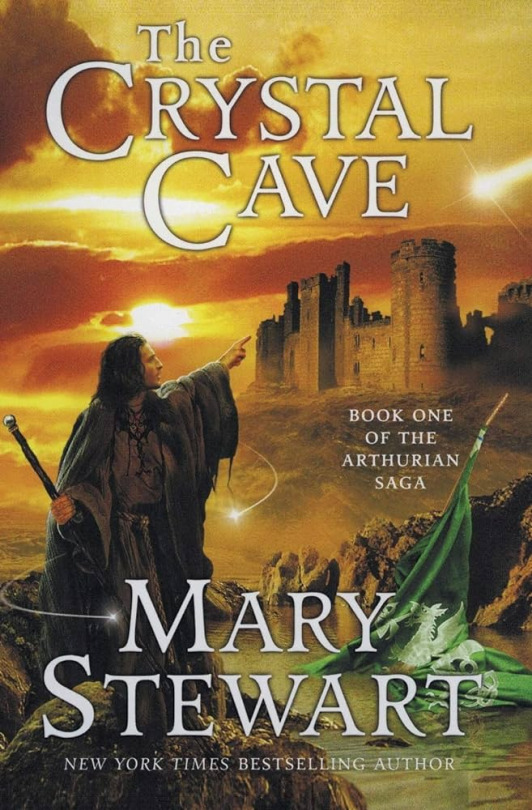
II/ Wizards and witches
The fantastical elements within modern rewrites are often embodied in the most visible way by a few key characters. First and foremost among this magical cast is, of course, Merlin the enchanter, but also regularly the bard Taliesin, despite his lesser presence within the Matter of Britain. Taliesin indeed only appears obviously tied to Arthur within the Welsh sources, especially “Preiddu Annwn”, where he is part of the expedition led by Arthur to steal away the cauldron of resurrection from the Otherworld. We can make the hypothesis that is it because of the historical rewrites of the Arthurian legends that the character of Taliesin gained such an importance, since it is in the Welsh sources that he is most frequently seen, sources that modern rewriters especially love due to judging them more ancient and thus more “authentic” and more Celtic than the chivalry romances and knighthood romans of France and England. Since Wales resisted more strongly to the Saxon invader, then to the Normand influence, modern novelists like to use the “Mabinogion” and the Welsh poems to historicize their Arthur. Taliesin usually stays within his traditional role of bard, in accord to the historical and bibliographical information we have about him. While quite brief, these information naturally designate him as the symbol of the Arthurian legend within a “realistic” rewriting, as a character between the history and the myth.
[In the “Hanes Taliesin” mainly, translated by Lady Charlotte Guest and which follows her “Mabinogion” translations, we discover the two births of Gwyon Bach/Taliesin, is exploits as a bard within the court of prince Elphin, and some of his poems. The historical Taliesin seems to have been a bard at the court of Urien Rheged during the 6th century, and the poems attributed to him were preserved within the “Llyfr Taliesin” (The Book of Taliesin). It notably contains the famous “Cat Godeu” (Battle of the Trees) and the previously mentioned “Preiddu Annwn”. These Welsh poems, like many others, were translated and published by William F. Skene within his “Four Ancient Books of Wales”]
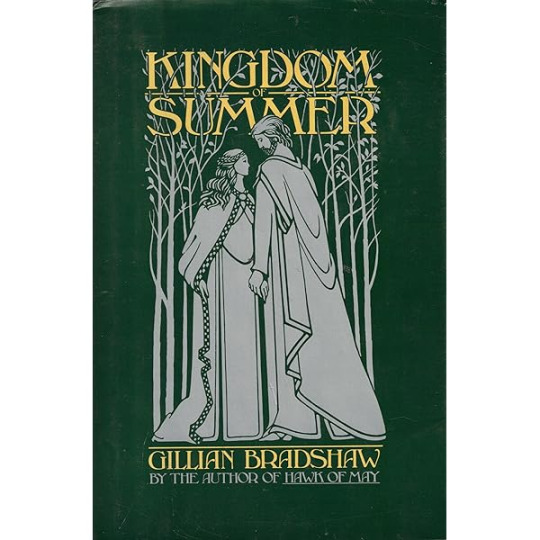
As such, within Fay Sampson’s “Daughter of Tintagel” cycle he becomes one of the five narrators that relate the life of Morgan. A first-person narration that give a voice to a secondary character of the medieval corpus is a fundamental trait of modern Arthurian literature : as such, we can hear Kai, Pelleas, Bohort, Rhys or Bedwyr, characters whose point of view is rarely given in legends, alongside the manifestation of more novel characters, such as Derfel, a shadowy warrior turned saint in the 6th century who narrates Bernard Cornwell’s “Warlord Chronicles”. [Respectively, Kai is heard within Phyllis Ann Karr’s The Idylls of the Queen and John Gloag’s Artorius Rex ; Pelleas within Stephen R. Lawhead’s Arthur and Courtway Jones’ In the Shadow of the Oak King ; Bohort within Dorothy Jane Roberts’ Launcelot my Brother ; Rhys within Gillian Bradshaw’s Kingdom of Summer ; Bedwyr within Catherine Christian’s The Sword and the Flame and Stephen R. Lawhead’s Arthur.]
Within Stephen Lawhead’s works, the role of Taliesin is more developed since he becomes the father, and so the precursor of Merlin (within Marion Zimmer Bradley’s, he is Merlin’s first incarnation). In his trilogy, the bard Talesin paves the way for Merlin, who will surpass his father in his role as the companion of the major hero, Arthur king of Britain. It is precisely this dimension that is often used by modern Arthurianists. [Stephen R. Lawhead wrote in reality five novels, the last two being a flash-back to episodes from between book 2 and 3. This Arthurian cycle is especially concerned with the questions of filiation, legitimacy and predestination. As such, Taliesin announces and foreshadow the coming of his son, a sort of messiah for the Britons, but Merlin himself works for the coming of Arthur, the savior of Britain as much on a spiritual level (the writings of Lawhead are distinctly Christian in tone) as on a political level. It is probably why we also see here a weird and exceptional element introduced, as Arthur is made the posthumous son of Aurelius, and not the bastard of Uther. Here Arthur is the product of an union blessed by the Church, and as such he descends from the first High-King, not from his replacement out of a “side-branch” of the family.]
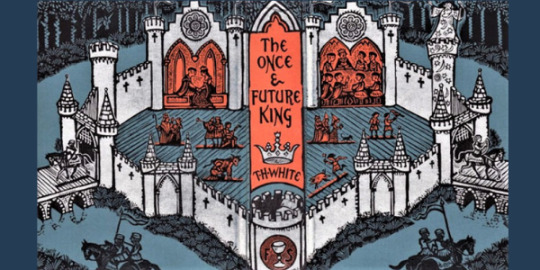
We also have to note that modern rewrites love to tell what happened during the life of characters in the form of prequels – in this case, the youth of Merlin, which is rarely detailed in the Middle-Ages outside of his birth and his encounter with Vortigern. It was the case within Mary Stewart, the first author who was concerned with the wizard’s youth, and who sems to have deeply marked modern Arthurianists, since the same pattern can be found in other novels, including those of Stephen Lawhead. This concern with “what happened before” is not exclusively Arthurian, and can be seen within other contemporary sagas – Star Wars, Indiana Jones, Blueberry… It is a tradition as old as the various “Childhoods” texts of the Middle-Ages. [Mary Stewart wrote “The Crystal Cave”, “The Hollow Hills” and “The Last Enchantment”. As a proof of the intertextuality of Arthurian novels, “the last enchantment” is an expression reused and exploited by Bernard Cornwell in the last part of his trilogy, where a dying Merlin, entirely devoured by his own student Nimue, preserves a “last enchantment” to allow Arthur and a few others to escape the battle of Camlan]
Be it Taliesin or Merlin, the first way the question of the magic implants itself within the narrative device is about the relationship between the king and his wizard. The magical element is thus tied to the political power, weighed down by a reality which, if not historical, is at least coherent. This heirloom is directly tied to the medieval sources, even if it is not obvious at first. The idea of an Arthur raised as a boy by Merlin owes much more to T.H. White’s “The Once and Future King” than to the medieval texts, where only a slow and complex evolution allowed the association of those two characters now seen as undividable. [White’s work is a set of five novels, first published separately, then compiled as one work in the 50s, and to which the last novel, The Book of Merlin, was added in 1977. This work is a precursor of all the rewrites that happened from the 60s onward, especially the first book that tells of Arthur’s childhood and his education by Merlin. It was a best-seller, and the adaptation of this first novel into an animated movie by Disney (63’s The Sword in the Stone) amplified its impact]. Indeed, within Geoffroy of Monmouth, Merlin and Arthur follow each other in the text… but never meet. It was within later rewrites, Wave, Lawamon, and in the French “Lancelot-Graal”, that the king and the enchanter will develop a more intimate relationship, culminating within Malory’s Morte Darthur. [In Geoffroy’s tale, the two characters at least never meet within the context of the tale. A doubt is allowed since in most of the manuscripts, Merlin makes a brief apparition at the very end of the “Historia”, where an “angelic voice” talks to Cadwallader, telling him that “God wishes that the Britons stop ruling within Britain until the moment that Merlin prophesized to Arthur” ; this sentence implies that Merlin might have been the king’s prophet, a role that will become more and more obvious in later rewrites]
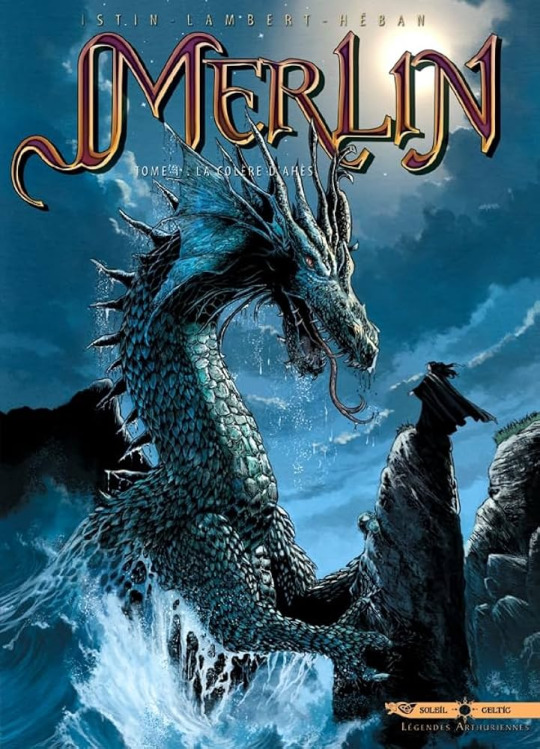
This is due to the two characters, Merlin and Arthur, originally belonging to two distinct traditions. Once they became connected thanks to Geoffroy’s Historia Regum Britaniae, the two characters got closer and closer, and gained many interactions, just as Merlin’s interventions became more and more fantastical. This is very clear when we look at an episode shared by all the medieval Merlinian tales: the moving of the stones of Ireland to create Stonehenge. Within Geoffroy’s, it is a mechanical process. Within Wace, an unexplained way. Finally, within Lawamon, it becomes a powerful spell that makes the stone “as light as feathers”. Modern authors follow this tradition and often reuse this episode, or a similar one, in what we can call “the motif of the dancing stones”. In the same way, within Lawhead’s novel, a child Merlin proves his powers to an assembly of druids by making the stones of a cromlech levitate. Stonehenge plays an important role for Cornwell: it becomes the place of a ghost-filled ceremony during which Merlin gives Excalibur to Arthur. Even among comic books, Merlin makes stones dance before amazed mortals. [It is within the first volume of the BD series “Merlin” by Jean-Luc Istin and Eric Lambert, “La colère d’Ahès” (The Wrath of Ahès). The dancing stones of Istin and Lambert are quite similar to the ones described by Lawhead, and the scenarist confessed having read the “Pendragon Cycle”. We find in this “Merlin” the same habt of syncretizing religions as within Lawhead’s works (father Blaise is a former druid, and offers Merlin as a symbol of the union of religions).]
We find back here what we said before: the historicized Arthurian literature of the 60s-80s greatly deprived the medieval text of their fantasy, and since the 80s-90s we have a slow re-appropriation of the medieval magic within novels that still, however, wish to be historical. In other terms – the stones are dancing again, but they are always dancing in a mentioned 6th century.
Before Lawamon, Merlin only acted during the lifetime of Aurelius and Uther, before disappearing for no reason after Arthur’s birth. However, the encounter between those two historical characters was too tempting to be avoided, and we can see a true shift between Geoffroy and Malory (for example), which today leads to the many tales in which Merlin acts as the teacher, tutor, or even adoptive father of Arthur. This filiation is helped by two elements. On one side, that is an elliptic moment covering Arthur’s childhood in medieval texts, and we go from him as a baby to him as a young fifteen-year old king. [We find within Lawamon the beginning of an explication: child-Arthur was raised by elves at Avalon. This idea was reused by Parke Godwin within the novel “Firelord”.] On the other hand, we can see that all of his next of kin die around the same time. In front of this absence of parents, it is very tempting to remove Ector (the father of Kay and the tutor of the royal child in the tradition) and put in his place a more familiar and impressive character, Merlin the wizard.
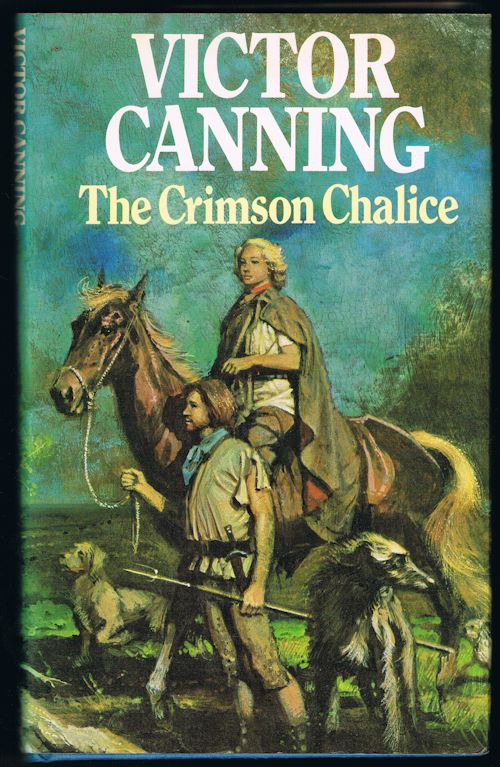
We talked before of the habit of “prequels”: the cyclical temptation of modern novels, which in a way mimics the Arthurian medieval tradition of a condensed and fractioned writing of the whole Arthurian legend (usually in three volumes), favorizes the writing of the origins, of the “before Arthur”. The introduction of Merlin, but also of Taliesin, proves this attraction for what Anne Besson calls an “Arthurian prehistory”. For Stephen Lawhead, the link between the various generations (Taliesin, father of Merlin, Merlin spiritual father of Arthur) insists upon the greatness and the predestination of the king of the Britons, the bearer of Light. Even when the Arthurian tale is limited to a single novel, it is not unusual to see it begin with the generation before Arthur: it was the case with Victor Canning’s “The Crimson Chalice”, where a third of the novel follows the events that led to Arthur’s birth (even though here Arthur’s parents are named Tia and Baradoc, and bear no resemblance to Igraine or Uther).
To all the reasons described above, we must add the fictional temptation of having characters coexisting to allow a powerful confrontation. But this temptation also bears a prevalent trait of the modern Arthurian fiction, and of its dialogue with the sources. Indeed, it is not uncommon to see a rearrangement, to various degrees, of the links that traditionally unite the characters. As such, in most sources Ygerne is the wife of Gorlois and the mother of Arthur, but she can be his half-sister and the mother of Medraud within Rosemary Sutcliff’s “Sword at Sunset”. The same Ygerne becomes Gorlois’ daughter, not his wife, in Stephen Lawhead’s work, as the author plays with the writing of the myth, has his Merlin-narrator laugh about the mad rumors that circulated about the siege of Tintagel “I have even heard it said that Ygerna was Gorlas’ wife – Imagine that!”). The marvelous does not escape this kind of more-or-less extreme shifts: the case of the female characters, of their relationship to magic, and of their role within history is especially revealing.
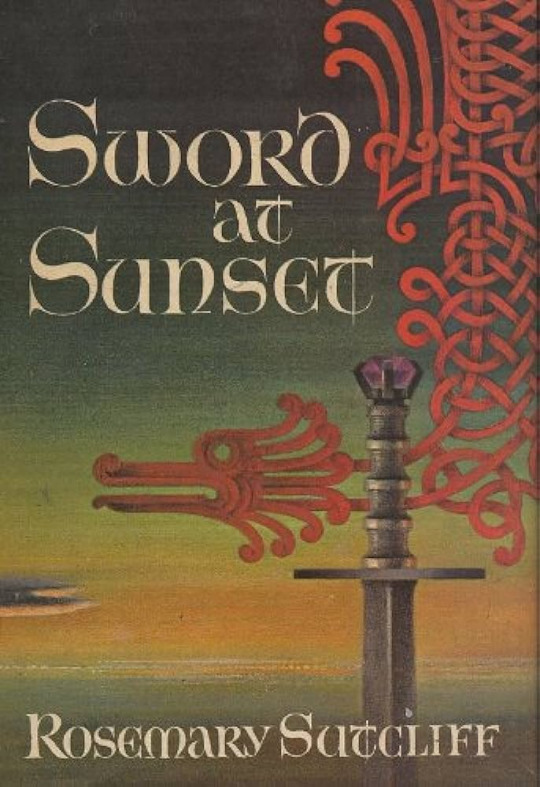
#arthuriana#fantasy#arthurian novel#fantasy novel#arthurian literature#translation#merlin#king arthur#taliesin#magic#arthurian rewrites#merlin the enchanter
13 notes
·
View notes
Text
; TEMPORARY OC MASTERLIST BC MY PINTEREST IS GONE AND IM NOT MENTALLY PREPARED TO MAKE A NEW ONE YET:
ASSASSIN’S CREED
verse: crypsis—
mido dumoulin-aziz: b. 1985. cairo, egypt. field agent to assassin brotherhood. descendant of altaïr ibn-la’ahad and arno dorian. (other verses: vtmb, dune) / ♡ jules gonzalez || FC: tamino amir
jules gonzalez: b. 1985. banyoles, spain. apprentice to the assassin brotherhood. missing in action. / ♡ mido dumoulin-aziz || FC: dakota johnson
aileen walsh: b. 1770. lexington. ally to the assassin brotherhood. occasional crossdresser. born to herd sheep. ancestor of mido dumoulin-aziz. / ♡ arno dorian || FC: lily james
finley walsh: b. 1745. new york. templar to the colonial rite. second in command on the morrigan. ancestor of mido dumoulin-aziz. / ♡ emily burke || FC: césar domboy
hesham el-sayed: b. 1963. cairo, egypt. current leader to the egyptian assassin cell. godfather of mido dumoulin-aziz. / ♡ gabriele de luca || FC: nour el-nabawy (past) & khaled el-nabawy (present)
gabriele de luca: b. 1965. florence, italy. anarchist & roadie. apprentice to the assassin brotherhood. / ♡ hesham el-sayed || FC: damiano david
rashid aziz: b. 1960. port said, egypt. mentor to the egyptian brotherhood until being killed in the great purge of 2000. / ♡ eloise dumoulin || FC: ahmed hossam
eloise dumoulin: b. 1961. paris, france. field agent to french brotherhood. keeper of one of three keys to a precursor vault in egypt. killed in the great purge of 2000. / ♡ rashid aziz || FC: audrey tautou
verse: yuva—
asha pandith: b. 1846. london, uk. assassin to the indian brotherhood. resident pyromaniac. grandmother to lydia frye. / ♡ jacob frye || FC: alia bhatt
daniyal pandith. b. 1850. bombay, india + london, uk. assassin to the indian brotherhood. doctor and scientist. father to sage naveen pandith. / ♡ cordelia moore || FC: dev patel
cordelia moore. b. 1848. london, uk. rook. mother to sage naveen pandith. / ♡ daniyal pandith || FC: saoirse ronan
ORIGINAL
douglas avery: b. 1903. los angeles, CA. stunt man. undercover horse girl. father to flora and twins tommy & alfie. / ♡ cathy davis || FC: tim holt
catherine davis: b. 1900. los angeles, CA. cook + caterer. mother to flora and twins tommy & alfie. / ♡ douglas avery || FC: marion davies
flora avery: b. 1928. los angeles, CA. film student at ucla. aspiring director. || FC: debbie reynolds
thomas “tommy” avery: b. 1931. los angeles, CA. motorcycle fanatic. greaser. || FC: farley granger
alfie avery: b. 1931. los angeles, CA. writer. traveler. college dropout. || FC: guy madison
OTHER FANDOM OCS
the witcher—
rhona aep deilyth: b. 1034. dol blathanna. aen seidhe. sorceress. advisor to francesca findabair. / ♡ philippa eilhart || FC: rebecca longendyke
vtmb—
dawn elliott: b. 1890. los angeles, CA. brujah. / ♡ mido dumoulin-aziz || FC: dove cameron
joanne fisher: b. 1980. los angeles, CA. toreador. mean girl gone wrong. || FC: claire holt
dune—
jada ashyaar: b. 10164. sietch tabr, arrakis. eldest daughter of stilgar. / ♡ mido jahira'teyr || FC: aurora perrineau
uncharted—
lexie ridgeway: b. 1980. york, uk. art dealer + collector. / ♡ sam drake || FC: taylor lashae
#ocmasterlist#ignore this. i wrecked my brain trying to remember the little descriptors from their boards. i think this is it#idc for adding the rpg kids sorry i havent thought abt them in ages anyway <3
2 notes
·
View notes
Text
75. "memory" (OC)
The train came to an eventual stop, the announcer calling out the stop. Catherine's aunt Mindy looks over at the young girl, quietly coloring a picture of a cat.
"We're here, sweet pea," Aunt Mindy says, leading a young Catherine off the train. "Watch your step," Mindy adds.
Catherine looks around at the bustling station, not letting go of her aunt's hand.
An older gentleman in a blue suit stands up from the bench and walks with confidence towards the two.
"Pop Pop!" Catherine calls out, bolting to the man, who immediately kneels down to hug her.
"You remember your Grandpa Marion?" Mindy asks with a smile.
"Y-ye-yes, Auntie."
"I'll be the one taking care of you from now on, poppet," Marion says, fixing the ribbon on Catherine's dress, "I have a room all set up for you."
Catherine nods, only understanding some of what he said.
Mindy waves them off and Catherine never lets go of her grandfather's hand until he placed her in the backseat of his car, adjusting her seatbelt and booster seat.
"Are you hungry?" Marion asks, pulling out of the parking lot.
"Yes Pop Pop..." Catherine replies.
The two stop by a McDonald's, Catherine happily munches on a burger -- getting ketchup all over her face.
Even in the present day, Catherine still has the Happy Meal toy she got that day -- a Playmobil "Umbrella Girl" figurine, which stands on top of her jewelry box.
@mishwanders @baldursbasics @notrattus @clayderogatory
5 notes
·
View notes
Text
Candidates for the title of
🌹Queen of Love & Beauty🌹
Candidates were given priority based on the number of submissions they received (in brackets behind their names and credentials). After all candidates with multiple submissions were entered, single submission candidates were admitted in order of submission.
Guinevere [Angel Coulby], BBC’s Merlin (2008-2012) [17]
Morgana Pendragon [Katie McGrath], BBC’s Merlin (2008-2012) [11]
Lady Éowyn of Rohan [Miranda Otto], The Lord of the Rings Trilogy (2001-2003) [10]
Lady Marian Fitzwalter [Olivia de Havilland], The Adventures of Robin Hood (1938) [9]
Isabeau of Anjou [Michelle Pfeiffer], Ladyhawke (1985) [8]
Arwen Undomiel [Liv Tyler], The Lord of the Rings Trilogy (2001-2003) [7]
Galadriel of Lothlórien [Cate Blanchett], The Lord of the Rings Trilogy (2001-2003) [7]
Princess Buttercup [Robin Wright], The Princess Bride (1987) [6]
Lucrezia Borgia [Holliday Grainger], The Borgias (2011-2013) [6]
Princess Isabella Maria Lucia Elizabetta of Valencia [Karen David], Galavant (2015-2016) [5]
Lagertha [Katheryn Winnick], Vikings (2013-2020) [5]
Sorsha [Joanne Whalley], Willow (1988) [5]
Lady Æthelflæd of Mercia [Millie Brady], The Last Kingdom (2015-2022) [4]
Princess Gwendolyn [Angela Lansbury], The Court Jester (1955) [4]
Maid Jean [Glynis Johns], The Court Jester (1955) [4]
Lady Marion of Leaford [Judi Trott], Robin of Sherwood (1984-1986) [4]
Rebecca of York [Olivia Hussey], Ivanhoe (1982) [4]
Alicent Hightower [Olivia Cooke], House of the Dragon (2022-) [3]
Aliena [Hayley Atwell], The Pillars of the Earth (2010) [3]
Queen Cersei Lannister [Lena Headey], Game of Thrones (2011-2019) [3]
Princess Daenerys Targaryen [Emilia Clarke], Game of Thrones (2011-2019) [3]
Danielle de Barbarac [Drew Barrymore], Ever After: A Cinderella Story (1998) [3]
Devasena [Anushka Shetty], Baahubali (2017) [3]
Elizabeth de Burgh [Florence Pugh], Outlaw King (2018) [3]
Queen Guinevere [Vanessa Redgrave], Camelot (1967) [3]
Hürrem Sultan [Meryem Uzleri], Magnificent Century {Muhteşem Yüzyıl} (2011-2014) [3]
Lady Jocelyn [Shannyn Sossamon], A Knight’s Tale (2001) [3]
Princess Lili [Mia Sara], Legend (1985) [3]
Lady Margaery Tyrell [Natalie Dormer], Game of Thrones (2011-2019) [3]
Marian of Knighton [Lucy Griffiths], BBC’s Robin Hood (2006-2009) [3]
Lady Sansa Stark [Sophie Turner], Game of Thrones (2011-2019) [3]
Sheng Minglan [Zhang Liying], The Story of Minglan (2018) [3]
Queen Susan the Gentle [Sophie Winkleman], The Chronicles of Narnia (2005-2010) [3]
Lady Anne Neville [Claire Bloom], Richard III (1955) [2]
Lady Anne Neville [Phoebe Fox], The Hollow Crown (2012-2016) [2]
Brienne of Tarth [Gwendoline Christie], Game of Thrones (2011-2019) [2]
Bronwyn [Nazanin Bonialdi], The Rings of Power (2022-) [2]
Queen Catherine of Aragon [Maria Doyle Kennedy], The Tudors (2007-2010) [2]
Contessina de Bardi [Annabel Scholey], Medici (2016-2019) [2]
Egwene Al’Vere [Madeleine Madden], The Wheel of Time (2021-) [2]
Queen Eleanore of Aquitane [Katharine Hepburn], The Lion in Winter (1968) [2]
Queen Elizabeth Woodville [Rebecca Ferguson], The White Queen (2013) [2]
Donna Giulia Farnese [Lotte Verbeek], The Borgias (2011-2013) [2]
Queen Guinevere [Cheri Lunghi], Excalibur (1981) [2]
Jadis, the White Witch [Tilda Swinton], The Chronicles of Narnia (2005-2010) [2]
Jeanne d’Arc [Renee Falconetti], The Passion of Joan of Arc {La Passion de Jeanne d’Arc} (1928) [2]
Joan of Arc [Milla Jovovich], The Messenger: The Story of Joan of Arc (1999) [2]
Kate [Laura Fraser], A Knight’s Tale (2001) [2]
Lady Kate Percy [Michelle Dockery], The Hollow Crown (2012-2016) [2]
Queen Lucy the Valiant [Rachael Henley] [2]
Queen Madelena [Mallory Jansen], Galavant (2015-2016) [2]
Queen Margaret of Anjou [Sophie Okonedo], The Hollow Crown (2012-2016) [2]
Lady Mary Boleyn [Charity Wakefield], Wolf Hall (2015-2024) [2]
Moiraine Damodred [Rosamund Pike], The Wheel of Time (2021-) [2]
Morgana Pendragon [Eva Green], Camelot (2011) [2]
Queen Rhaenyra Targaryen [Emma D’Arcy], House of the Dragon (2022-) [2]
Queen Sibylla of Jerusalem [Eva Green], Kingdom of Heaven (2005) [2]
Eliška Pomořanská [Jana Brejchová], A Night at Karlstein {Noc na Karlštejně} (1973) [1]
Lady Marian [Audrey Hepburn], Robin & Marian (1976) [1]
Ophelia [Jean Simmons], Hamlet (1948) [1]
Aykız Hatun [Hande Subaşı], Diriliş: Ertuğrul (2014-2019) [1]
Roberta Steingas [Clare Foster], Galavant (2015-2016) [1]
Tamina [Gemma Arterton], Prince of Persia (2010) [1]
Princess Isabelle [Sophie Marceau], Braveheart (1995) [1]
Alexandra [Geraldine Viswanathan], Miracle Workers: The Dark Ages (2020) [1]
Isabella of Valois [Emma Hamilton], RSC’s Richard II (2013) [1]
Jade Claymore [Erin Kellyman], Willow (2022) [1]
Anne Boleyn [Genevieve Bujold], Anne of the Thousand Days (1969) [1]
Mu Nihuang [Liu Tao], Nirvana in Fire (2015-2018) [1]
Padmavati [Deepika Padukone], Padmaavat (2018) [1]
Queen Isabella [Tilda Swinton], Edward II (1991) [1]
Djaq [Anjali Jay], BBC’s Robin Hood (2006-2009) [1]
Below is a list of Honorable Mentions...
Anne Boleyn [Natalie Portman], The Other Boleyn Girl (2008)
Aslaug [Alyssa Sutherland], Vikings (2013-2020)
Aviendha [Ayoola Smart], The Wheel of Time (2021-)
Catherine of Aragon [Charlotte Hope], The Spanish Princess (2019-2020)
Cecilia Algotsdotter [Sofia Helin], Arn: The Knight Templar (2007)
Doric [Sophia Lillis], Dungeons & Dragons: Honour Among Thieves (2023)
Queen Elizabeth of York [Jodie Comer], The White Princess (2017)
Jiang Yanli [Xuan Lu], The Untamed (2019)
Guinevere [Julia Ormond], First Knight (1995)
Hafsa Sultan [Nebahat Çehre], Magnificent Century {Muhteşem Yüzyıl} (2011-2014)
Hatice Sultan [Selma Ergeç], Magnificent Century {Muhteşem Yüzyıl} (2011-2014)
Queen Isabella of Castile [Michelle Jenner], Isabel (2011-2014)
Isolde [Sophia Myles], Tristan + Isolde (2006)
Joan of Arc [Ingrid Bergman], Joan of Arc (1948)
Kira [Lisa Maxwell, Kathryn Mullen], The Dark Crystal (1982)
Queen Mab [Miranda Richardson], Merlin (1998)
Maleficent [Angelina Jolie], Maleficent (2014)
Lady Margaret Tudor [Georgie Henley], The Spanish Princess (2019-2020)
Marian Dubois [Mary Elizabeth Mastrantonio], Robin Hood: Prince of Thieves (1991)
Lady Mary Tudor [Sai Bennett], The Spanish Princess (2019-2020)
Empress Maude [Alison Pill], The Pillars of the Earth (2010)
Morgaine [Julianna Marguiles], The Mists of Avalon (2001)
Queen Ravenna [Charlize Theron], Snow White and the Huntsman (2012)
Rebecca of York [Elizabeth Taylor], Ivanhoe (1952)
Rosie Cotton [Sarah MacLeod], The Lord of the Rings Trilogy (2001-2003)
Sharako Lohar [Abigail Thorn], House of the Dragon (2022-)
Tár-Miriel [Cynthia Addai-Robinson], The Rings of Power (2022-)
Ygritte [Rose Leslie], Game of Thrones (2011-2019)
Yara Greyjoy [Gemma Whelan], Game of Thrones (2011-2019)
64 notes
·
View notes
Note
could i request names similar to Eleanor/Eleanora? i love elegant names like that

ELEANOR/A︰ aaron. adelaide. adeline. alanah. alex. alexander. alice. alix. allen. alondra. alora. amalia. amea. amelia. anna. anne. anneliese. annora. anora. aron. arrow. arthur. barbara. beatrice. belen. benjamin. camen. catharine. catherine. charles. charlie. charlotte. clara. clarance. compass. cora. domino. dorothea. dorothy. edward. elanor. elara. eleanore. elena. elenor. eleonora. elian. eliana. elinor. elinore. eliora. eliza. elizabeth. ella. elleanor. ellie. elmarie. elmer. eloise. elon. elora. emma. esmeralda. estella. eudes. evelina. evelyn. everett. ferdinand. finn. flora. frances. francis. galaxy. genevieve. george. grace. harper. hazel. helen. helena. henry. isabella. isadora. ivy. jala. james. jane. jean. jessie. joan. johann. johanna. john. josephine. jude. laura. leland. len. leni. lenora. lenore. leonora. liam. liliana. lora. loretta. lucy. lysander. madlena. maeve. magdalena. margaret. maria. mariella. marion. mary. maximilian. maximillian. melanie. melany. milo. nathaniel. nell. noah. nora. norah. noura. oliver. olivia. owen. penelope. princess. quinn. richard. riely. robert. robin. rowan. sam. scarlett. sophia. theodora. theodore. thomas. tristane. ursula. violet. william. willow. + more

11 notes
·
View notes
Text
Coeli's Picks: Monochrome, part 2 (Gloria Swanson Edition)
One Dress a Day Challenge
Coeli wrote: "And now for a whole lot of Gloria Swanson, because she might have had the best film wardrobe ever."
In chronological order. (This list includes a couple of reposted images, but @coeli1000 suggested them in the first place.)
Male and Female (1919) / As Lady Mary Lazenby
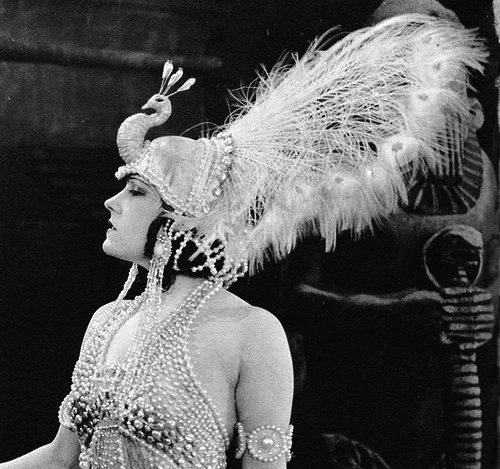
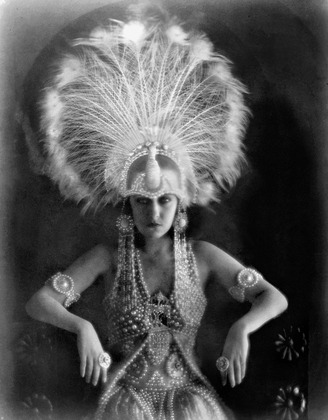

My American Wife (1922) / As Natalie Chester
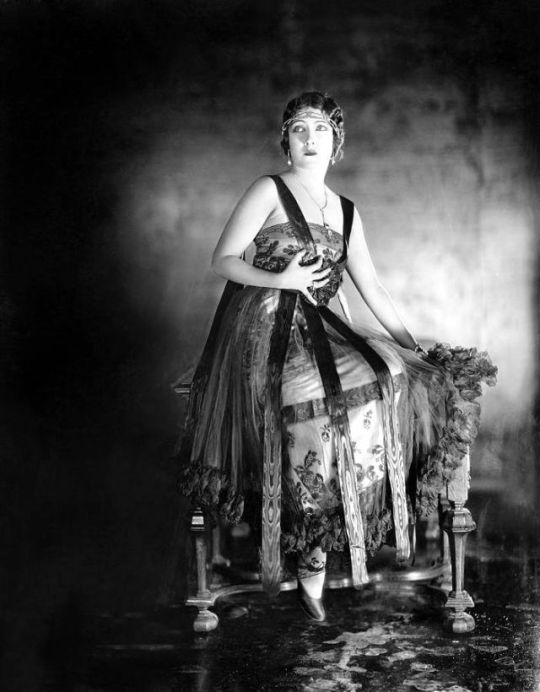
The Impossible Mrs. Bellew (1922) / As Betty Bellew
(See previous post here.)

Zaza (1923) / As Zaza
"Dig those painted stockings!" (See previous post here.)

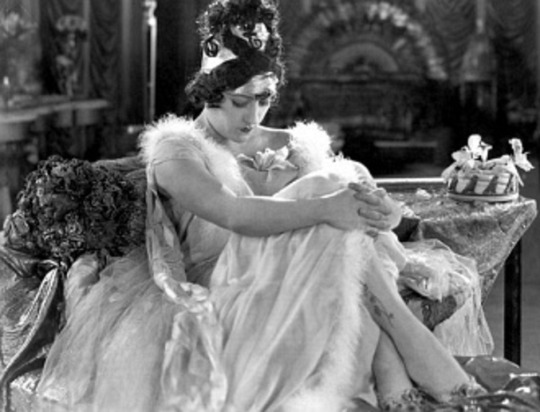
Madame Sans-Gêne (1925) / As Catherine Hübscher
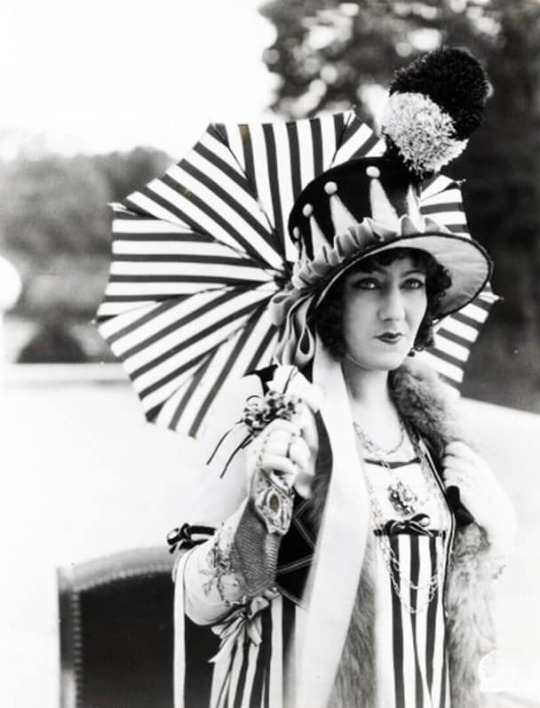

The Trespasser (1929) / As Marion Donnell
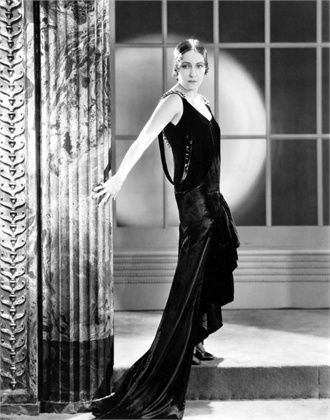
Indiscreet (1931) / As Geraldine "Jerry" Trent
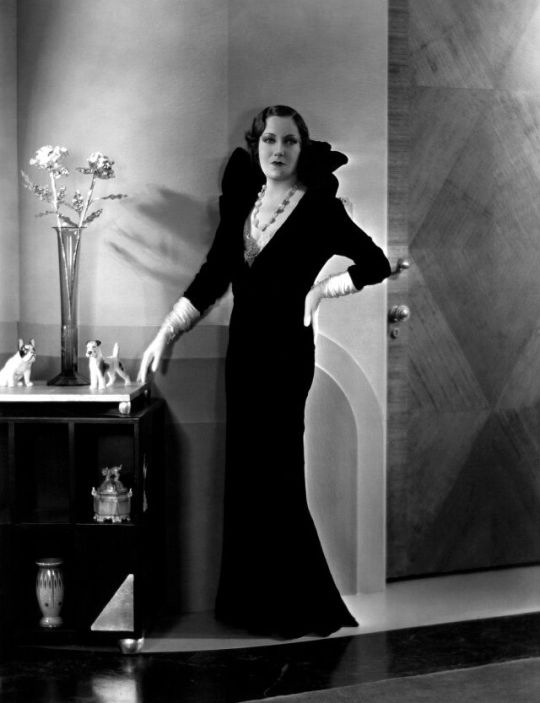
Music in the Air (1934) / As Frieda Hotzfelt

#anything goes december#gloria swanson#one dress a day challenge#one dress a week challenge#movie costumes#the impossible mrs bellew#male and female#my american wife#zaza 1923#madame sans gene#the trespasser#indiscreet#music in the air#silent movies#pre code#1920s fashion#1930s fashion#old hollywood#black and white movies#20th century costumes
19 notes
·
View notes